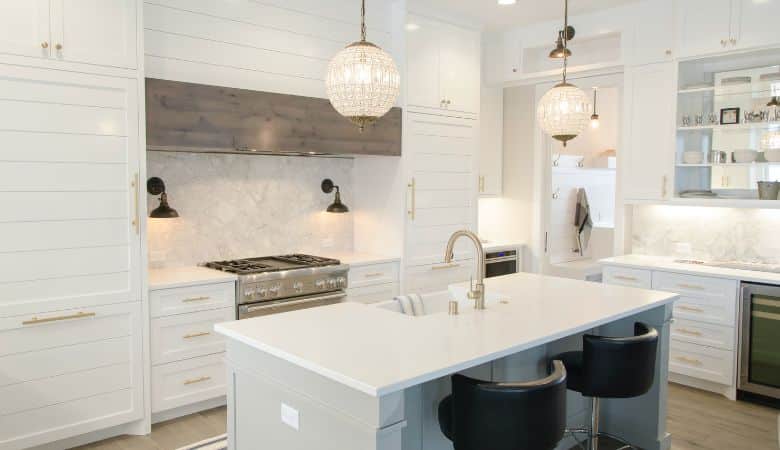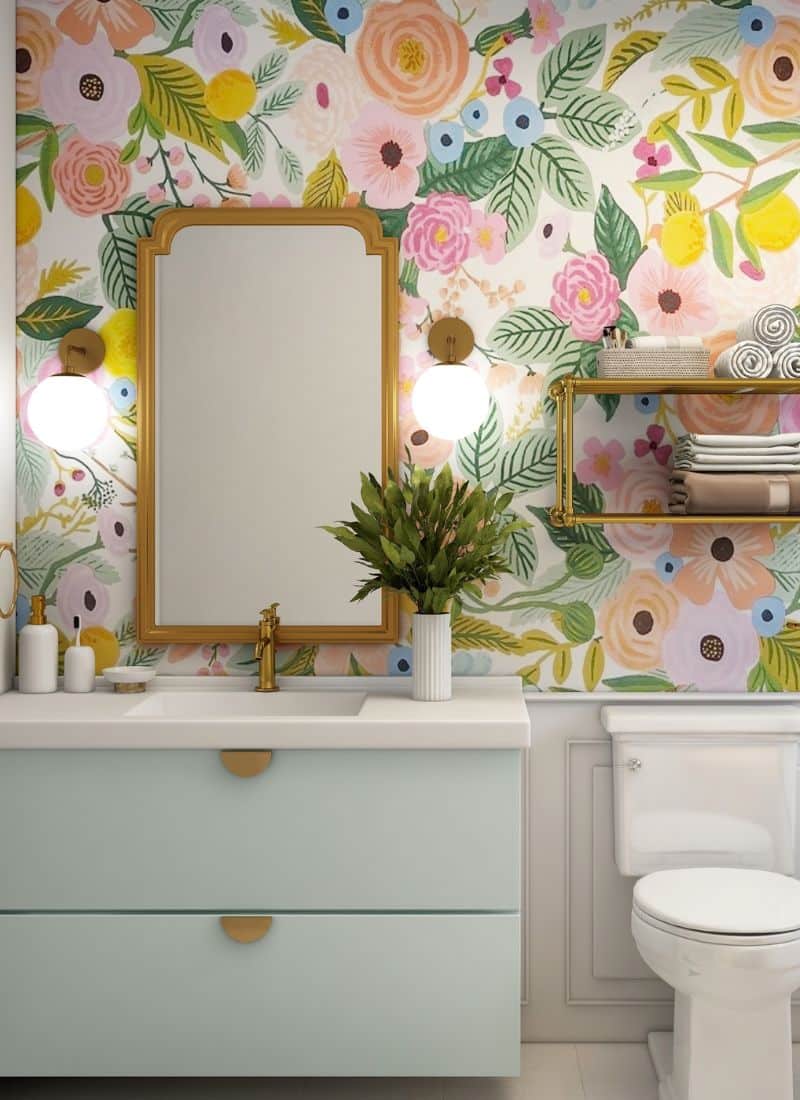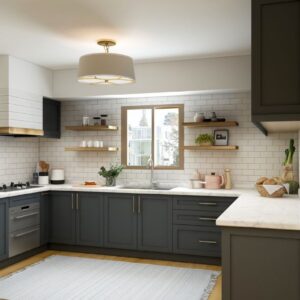
Kitchen countertops are an essential kitchen component, serving as a functional workspace for food preparation and storage. However, determining the appropriate size for a kitchen countertop can be a challenging task. There are numerous factors to consider, including the height, width, and depth of the countertop, as well as the specific requirements of the homeowner. In this article, we will explore the topic of standard kitchen countertop sizes and discuss the various factors that can influence the size and dimensions of a countertop.
The typical height range for a kitchen countertop is between 36 to 42 inches, with a depth of 24 inches. However, countertop dimensions can vary based on personal preference, kitchen layout, and appliance placement.
Whether renovating an existing kitchen or building a new one, selecting the right countertop size is critical to ensuring your kitchen is functional and aesthetically pleasing. With numerous options available in the market, it can be challenging to determine which size and dimensions will work best for your space. By examining the standard countertop sizes and understanding the factors that influence their dimensions, you can make an informed decision and select the perfect countertop for your kitchen.
Understanding Standard Kitchen Countertop Heights
Kitchen countertop height is typically measured from the floor to the top surface of the countertop. The standard height for kitchen countertops is between 36 to 42 inches. Most people consider this height range comfortable, as it allows for a comfortable working position while standing. The exact height within this range depends on the height of the person using the countertop, their specific needs, and any appliances that may be installed below the countertop.
Factors influencing countertop height include the user’s height, the type of tasks performed on the countertop, and the presence of appliances such as dishwashers and stovetops. For example, a taller individual may prefer a slightly higher countertop height to ensure comfortable use, while a shorter person may prefer a lower height. Additionally, a countertop primarily used for food preparation may be set lower than one used for dining or seating.
Determining the appropriate height for your kitchen countertop involves considering these factors and selecting a height that works best for you. The table below provides a summary of the standard kitchen countertop heights, and their recommended uses:
| Countertop Height | Recommended Use |
| 30 inches | Seating |
| 36 inches | Food preparation |
| 42 inches | Bar or island |
Related posts you may like: What Is Included In A Fully Equipped Kitchen?
The Role of Depth in Choosing the Right Countertop
The kitchen countertop depth is an essential factor to consider when selecting the appropriate size for your kitchen. The standard depth for a kitchen countertop is 24 inches, which provides ample space for most kitchen tasks. However, the depth of your countertop can vary based on your specific needs, kitchen layout, and appliances.
A countertop with a shallow depth of 18 inches may suit smaller kitchens or homeowners who prefer a minimalist aesthetic. A deeper countertop, such as 30 inches or more, can provide additional workspace and may be necessary for homeowners who frequently entertain or use their kitchen for large-scale food preparation.
It’s essential to consider the placement of appliances such as sinks, cooktops, and refrigerators when determining the appropriate depth for your countertop. The countertop depth should be compatible with the depth of the appliances to ensure a seamless and functional kitchen workspace.
How to Determine the Best Width for Your Kitchen Countertop
Determining the appropriate width for your kitchen countertop involves considering several factors, such as the size of your kitchen, the intended use of the countertop, and the presence of appliances. The standard width for a kitchen countertop is typically between 25 to 30 inches, although wider or narrower options are available to suit specific needs.
A narrow countertop may suit smaller kitchens, or homeowners prefer a minimalist aesthetic. However, a wider countertop may be necessary for homeowners who frequently entertain or use their kitchen for large-scale food preparation. In addition, the width of your countertop should be compatible with the placement of appliances such as sinks, cooktops, and refrigerators to ensure a seamless and functional kitchen workspace.
Another important consideration when determining countertop width is the overhang. An overhang of 10 to 12 inches is standard, providing ample space for seating and dining. However, the overhang can be adjusted based on personal preference and the intended use of the countertop.
Related posts you may like: Why Are Kitchens On The Ground Floor? Explained
Factors That Can Influence Countertop Size and Dimensions
When choosing the size and dimensions of your kitchen countertop, several factors can influence your decision. In this section, we will discuss some of the key factors that can influence countertop size and dimensions.
- Kitchen Layout: Your kitchen layout can play a significant role in determining the appropriate countertop size. For example, a galley-style kitchen may require a longer, narrower countertop, while an open-concept kitchen may benefit from a larger, multi-functional countertop.
- Personal Preference: Personal preference is essential in determining countertop size and dimensions. Some homeowners may prefer a larger countertop for additional workspace, while others may prefer a smaller countertop for a minimalist aesthetic.
- Appliance Placement: The placement of sinks, cooktops, and refrigerators can also influence countertop size and dimensions. Countertops should be compatible with the depth and width of appliances to ensure a functional and seamless workspace.
- Budget: Budget is another crucial factor in determining countertop size and dimensions. Larger countertops may be more expensive, and certain materials may be more costly than others.
- Material: The material of your countertop can also impact its size and dimensions. For example, materials such as granite and marble may be more challenging to customize than materials such as laminate or quartz.
Selecting the appropriate size and dimensions for your kitchen countertop involves considering various factors, such as kitchen layout, personal preference, appliance placement, budget, and material. Examining these factors allows you to select a countertop that meets your needs and fits your space.
Popular Kitchen Countertop Size Options for Different Kitchen Layouts
Regarding kitchen countertop size, the appropriate dimensions can vary depending on your kitchen layout. This section will explore popular kitchen countertop size options for different kitchen layouts.
- U-Shaped Kitchen: In a U-shaped kitchen, the countertop should ideally be at least 8 feet long on each leg, with a depth of 24 inches. This size provides ample workspace for food preparation and storage.
- L-Shaped Kitchen: In an L-shaped kitchen, the countertop should ideally be 10 feet long on the longer leg and 6 feet long on the shorter leg, with a depth of 24 inches. This size provides plenty of workspaces and accommodates sinks, cooktops, and refrigerators.
- Galley Kitchen: A narrower countertop is typically more suitable in a galley kitchen. A countertop with a depth of 18 inches and a width of 24 inches is often sufficient for this layout.
- Island Kitchen: In an island kitchen, the size of the countertop will depend on the size of the island itself. A countertop with a depth of 30 inches and a width of 36 inches is suitable for most islands, providing ample workspace and seating.
Here’s a table summarizing popular kitchen countertop size options for different kitchen layouts:
| Kitchen Layout | Countertop Length (minimum) | Countertop Depth |
| U-Shaped Kitchen | 8 feet on each leg | 24 inches |
| L-Shaped Kitchen | 10 feet on longer leg, 6 feet on shorter leg | 24 inches |
| Galley Kitchen | 18 inches width | 24 inches |
| Island Kitchen | 30 inches width, 36 inches depth | 36 inches |
In addition to these specific layouts, homeowners may opt for customized or unconventional countertop sizes to suit their needs and preferences. It’s important to consider factors such as appliance placement and overhang when selecting the appropriate size for your kitchen countertop.
Related posts you may like: Dishwasher Soap Dispenser Opens But Soap Remains Inside It: Here’s How To Fix It
How to Measure Your Kitchen Space for Countertop Installation
Measuring your kitchen space accurately is crucial for ensuring a proper countertop installation. In this section, we will discuss how to measure your kitchen space for countertop installation.
- Measure the length and width of your existing countertops: Using a tape measure, measure the length and width of your existing countertops. Be sure to measure the longest and widest points and any areas where the countertop may be irregular.
- Identify any obstructions: Note the placement of appliances, sinks, and other obstructions that will affect the installation of your new countertop. Measure the distance between these obstructions and the wall to ensure your new countertop fits properly.
- Determine the overhang: Decide on the desired overhang for your new countertop. The overhang is the countertop amount extending beyond the cabinets’ edge. A standard overhang is 1 to 1.5 inches, although this can vary based on personal preference and the intended use of the countertop.
- Measure the height: Measure the height of the base cabinets, including the toe kick. This measurement will help ensure the new countertop is leveled with the base cabinets.
- Calculate the square footage: Calculate the square footage of your countertop space by multiplying the length by the width. This measurement will help you determine the material you need for your new countertop.
Measuring your kitchen space accurately is critical for ensuring a proper countertop installation. By measuring the length and width of your existing countertops, identifying any obstructions, determining the overhang, measuring the height of the base cabinets, and calculating the square footage, you can ensure that your new countertop fits properly and functions as intended.
Related posts you may like: The Kitchen at Front of House: Pros & Cons
Common Kitchen Countertop Material Choices and Their Impact on Size
The material of your kitchen countertop can impact its size and dimensions in several ways. This section will explore common kitchen countertop material choices and their impact on size.
- Granite: Granite is a popular choice for kitchen countertops due to its durability and natural beauty. Granite countertops are typically 25 to 27 inches in depth, and their width can vary depending on the slab size. Larger slabs may allow wider countertops, while smaller slabs may require seams.
- Marble: Marble is another popular choice for kitchen countertops due to its elegant appearance. Marble countertops are typically 24 to 25 inches in depth, and their width can vary depending on the size of the slab. Marble countertops may require additional support due to their weight and fragility.
- Quartz: Quartz is popular for kitchen countertops due to its durability and low maintenance. Quartz countertops are typically 25 inches deep, and their width can vary depending on the slab size. Quartz countertops may require additional support if the slab is particularly large.
- Laminate: Laminate is popular for kitchen countertops due to its affordability and versatility. Laminate countertops are typically 24 to 25 inches in depth, and their width can vary depending on the size of the sheet. Laminate countertops can be cut into custom sizes and shapes, making them a flexible choice for any kitchen.
- Solid Surface: Solid surface countertops are popular for their seamless appearance and low maintenance. Solid surface countertops are typically 25 inches in depth, and their width can vary depending on the size of the sheet. Solid surface countertops can be cut to custom sizes and shapes, allowing for greater flexibility in design.
In summary, the material of your kitchen countertop can impact its size and dimensions in various ways. By examining common kitchen countertop material choices, you can select a countertop that meets your needs and fits your space.




